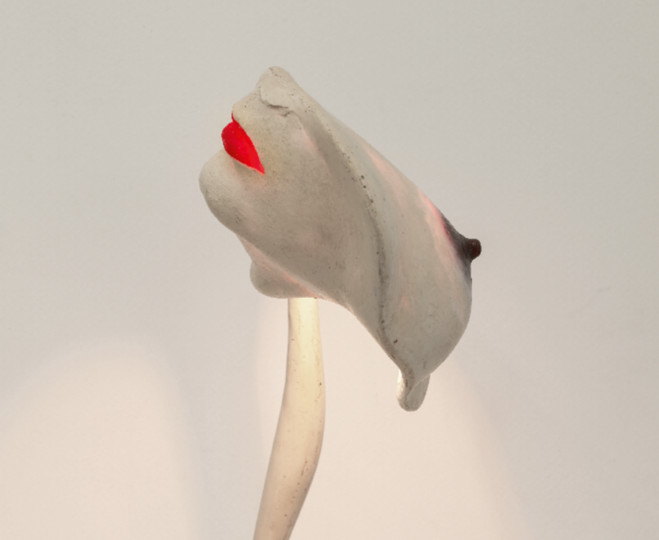Alina Szapocznikow — Langages du corps
Exhibition

Alina Szapocznikow
Langages du corps
Ends in 14 days: October 20, 2025 → January 4, 2026
Today considered one of the major artists of the 20th century, Alina Szapocznikow (1926 in Kalisz, Poland — 1973 in Passy, Haute-Savoie) has rarely been the subject of exhibitions in her adopted country, France.
The Musée de Grenoble, in partnership with the Kunstmuseum Ravensburg, presents a journey through nearly 150 works created between 1947 and 1973. The exhibition Alina Szapocznikow. Language of the Body offers a comprehensive overview of the artist’s career, emphasizing her mature period of the 1960s and 1970s.
In her work, where eroticism and trauma intertwine, the body is the central source of inspiration. As a sculptor, she experimented with all kinds of materials, both classical and innovative, such as polyester resin and polyurethane foam. Heir to Surrealism and contemporary of the artists of Nouveau Réalisme, she contributed independently, in barely two decades, to the renewal of sculpture.
Disturbing, strange, baroque, existential, formless, and erotic, the work of Polish sculptor Alina Szapocznikow, long misunderstood, defies classification. By devoting her art to the body, she expressed through it both the power of eroticism and the fragility of human existence. The exhibition, unfolding across 15 rooms, is divided into two parts. The first is devoted to her years of creation in Prague (1945–1951) and in Poland (1951–1962). The second focuses on the decade she spent in Paris, from 1963 to 1973.
Jewish, Szapocznikow survived the Holocaust and her imprisonment in concentration camps as a teenager.
After World War II, she developed a formal language combining Czech modernism, Surrealism, and Art Informel with the aesthetics of Socialist Realism. She responded to public commissions and created works marked by a form of existentialism.
Szapocznikow produced most of her mature work in France, where she settled permanently in 1962. Together with her husband, the graphic designer Roman Cieslewicz, she began deconstructing the human figure. The fragmented body became the core of her sculptural and graphic production. Inventing a kind of erotic grammar and a personal mythology where desire coexists with death, the artist sought to ward off her fears and exorcise her traumas. Through her Lamp-Bouches (Mouth-Lamps), Desserts, and Belly-Cushions series, she created serial works composed of sensual and unsettling body fragments, questioning the role of women in 1960s society.
Her interest in formlessness and chance also materialized in her Photosculptures (1971), in which pieces of chewing gum—chewed by the artist herself—are photographed like traditional sculptures.
From 1969 onward, after being diagnosed with breast cancer, Szapocznikow focused on memory, trauma, and mortality in her Souvenirs series (1970–1971) and Tumors (1969–1972). Made of resin, crumpled photographs, newspapers, and gauze, these works evoke illness while bearing witness to the artist’s unyielding courage and creative vitality.
For the singularity and eroticism that pervade her work, Szapocznikow has often been compared to Louise Bourgeois and Eva Hesse. The exhibition seeks to highlight the work of a pioneering woman artist long overlooked by art history.
INFORMATIONS PRATIQUES"://www.museedegrenoble.fr/3321-alina-szapocznikow.-langage-du-corps.htm